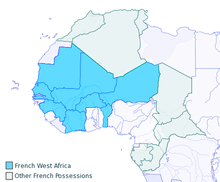시모리목
Symmoriiformes| 시모리목 시간 범위:382.7–280 엄마 PreꞒ Ꞓ OSDCPTJKPg N후기 Devonian-초기 페름기(가족 Falcatidae의 멤버들은 초기 백악기의 유럽에서까지 살수도 있었다.). | |
|---|---|
 | |
| Symmorium | |
| 과학적 분류 | |
| 킹덤: | 애니멀리아 |
| 망울: | 코다타 |
| 클래스: | 콘드리히테예스 |
| Subclass: | 홀로체팔리 |
| 순서: | †시모리목 Zangerl, 1981년(sensu라고 Maisey가, 2007년). |
| 가족들과 genera | |
holocephalians의 Symmoriiformes는 멸종된 주문입니다.[1]원래 Symmoriida Zangerl(1981년)[2]에 의해 그것을 나중에 몇몇 다른 이름으로 알려져 왔다.반면 Maisey(2008년)Symmoriiformes하기 위해서 가족으로 오인되는 것을 방지하는 쪽으로 이름을 정정했고 룬드(1986년)Cladodontida 단체 synonymized.[3]그symmoriiform 화석 기록은 석탄기의 시작에서 보인다.그들 중 다수가 공장 밖에서 페름기 사작되는 하지만 Dwykaselachus은 Artinskian-Kungurian 남 아프리카 출신의 유명하다 죽었다.[1]치아는 Valanginian France[4]과 Austria[5]의 가족 Falcatidae의 멤버 초기 백악기까지 생존해 있다는 것을 보여 주지만 이러한 치아는 더neoselachian 이를 가능성이 높은 것으로 주장하다.[6]
화석 분포
Symmoriida의 화석 증거 베어 걸치 퍼거스 카운티, Montana,[7]베델 채석장, 파이크 카운티, 인디아나,Kinshozan 채석장, 알래스카, 기후 현 다카야마 시, 일본, 바시키르 공화국, 러시아어 Federation[8]과 프랑스에서 발견되었다.
분류
그 symmoriiformes Cladoselachii에 판새아강에 윌리엄스(1998년)에 의해 고토(알.(1988년), Sepkoski에 의해 2002년과 Maisey가 2008년에서 Chondrichthyes에 의해 배정되어 왔다.
Dwykaselachus의uncrushed 얻기 위해 전두어아강의 귀 미로와 뇌 공간 구성들 은상 어류의 것과 유사하다 등 symmoriiforms다 식구로는 내부 해부학의 많은 부분임을 나타낸다.[1]
갤러리
참조
- ^ a b c Coates M.; Gess R.; Finarelli J.; Criswell K.; Tietjen K. (2016). "A symmoriiform chondrichthyan braincase and the origin of chimaeroid fishes". Nature. 541: 208–211. doi:10.1038/nature20806. PMID 28052054.
- ^ Zangerl, R. (1981). Chondrichthyes I – Paleozoic Elasmobranchii. Handbook of Paleoichthyology. Stuttgart: Gustav Fischer Verlag. pp. i–iii, 1–115.
- ^ Maisey, John G. (31 October 2007). "The braincase in Paleozoic symmoriiform and cladoselachian sharks". Bulletin of the American Museum of Natural History. 307: 1–122. doi:10.1206/0003-0090(2007)307[1:TBIPSA]2.0.CO;2.
- ^ Guillaume Guinot; Sylvain Adnet; Lionel Cavin & Henri Cappetta (2013). "Cretaceous stem chondrichthyans survived the end-Permian mass extinction". Nature Communications. 4: Article number: 2669. doi:10.1038/ncomms3669. PMID 24169620.
- ^ Feichtinger, Iris; Engelbrecht, Andrea; Lukeneder, Alexander; Kriwet, Jürgen (2020-07-02). "New chondrichthyans characterised by cladodont-like tooth morphologies from the Early Cretaceous of Austria, with remarks on the microstructural diversity of enameloid". Historical Biology. 32 (6): 823–836. doi:10.1080/08912963.2018.1539971. ISSN 0891-2963.
- ^ Alexander O. Ivanov (2022). "New late Carboniferous chondrichthyans from the European Russia". Bulletin of Geosciences. 97 (2). doi:10.3140/bull.geosci.1845.
- ^ Lund R (1982). "Harpagofututor volsellorhinus new genus and species (Chondrichthyes, Chondrenchelyiformes) from the Namurian Bear Gulch Limestone, Chondrenchelys problematica Traquair (Visean), and their sexual dimorphism". Journal of Paleontology. 56 (4): 938–958., John Alroy의 승인을 받은 고생물학 데이터베이스: 베어 걸치 현장
- ^ Ivanov A (2005). "Early Permian chondrichthyans of the middle and south Urals". Revista Brasileira de Paleontologia. 8 (2): 127–138. doi:10.4072/rbp.2005.2.05.






